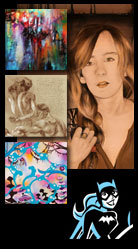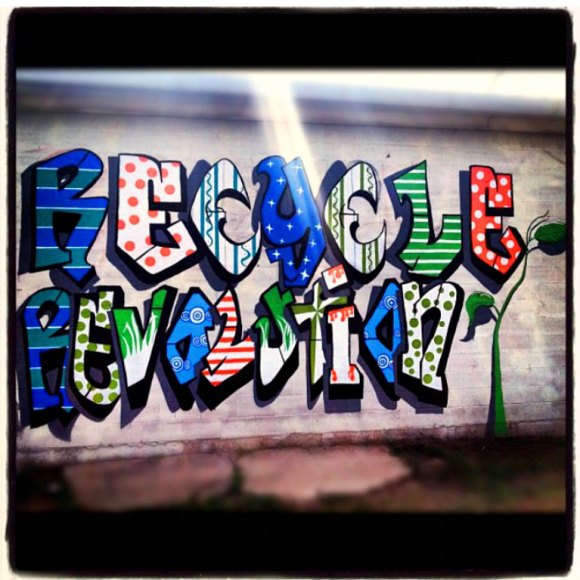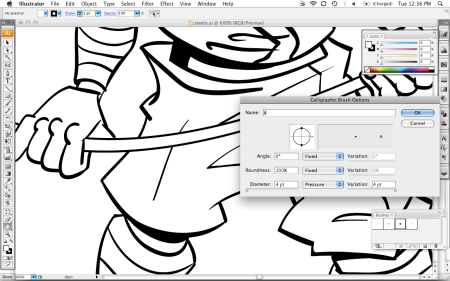Derek is an MBA in entrepreneurship, painter, and bassist for Onward We March, a local progressive metal band. He teaches business skills to artists and writes weekly music business advice for his blog Derek Thinks Music. Got a business question about your art? Shoot him an email at derekmiller5@gmail.com
—
Bloomberg Businessweek delves into the Nickelback money-printing machine::
As of May 2011, the rock-star-cum-business-mogul was earning $9.7 million a year from his various ventures, according to court records filed with the Supreme Court of British Columbia. He has a vacation home with friends in Cabo San Lucas, Mexico, a 20-acre farm with stables in British Columbia, and his own home recording studio. Chad Kroeger is not just a drunken rock god: He’s a kingmaker.
In an age of declining music industry profits, Chad is one of the few musicians who still lives “The Rockstar Lifestyle” as portrayed in the media. At the same time, they’re one of the most maligned musicians today, especially by fellow musicians.
In 2010 skeptics set up a Facebook (FB) group that purposely misspelled the band’s name: “Can This Pickle Get More Fans Than Nickleback?” The pickle rallied about 1.5 million people in the single month it was live. Last Thanksgiving, an online petition to prevent the band from playing during halftime at a Detroit Lions game drew 50,000 signatures. In the fall, when Chicago’s teachers went on strike, a pro-union protester attacked the mayor with what was meant to be a devastating sign: “Rahm Emanuel likes Nickelback.” The mayor quickly denied the charge.
How is this possible?
It’s about differing strategies and motivations towards the music industry.
—
Why do you play music?
Your answer to this question has profound ramifications on your band’s ideal strategy.
Lets think through some answers to get an idea for how this will effect your goals.
Be Nickelback-rich?
This is the major label game.
You’ll need to play music with a very wide appeal. Your live show needs to be excellent. Your image will be groomed. You’re going to be a performer, not a musician.
Read my previous guide on How to Sell Out Properly for a more in-depth treatment.
Be highly regarded among the music community?
This is a different, smaller clientele than the music listening public. Be aware of the nuances and limitations of this different market.
And you should probably be practicing while reading this post, too.
Be famous?
Making amazing music is the obvious method here, but there’s a million different paths to this achieving this goal. It’s about attention.
If you have video or choreography skills you could build a massive following through videos like OkGo did with that sweet treadmill video. Make music so out-there that you develop a cult following like Sunn O))).. You could even join The 27 Club (not advised).
Play music and have financial security?
This would be an argument for keeping a day job. Freedom for your art and you don’t have to survive on ramen alone.
Play music for a living (no day job)?
Play a lot. Probably in a few different bands to diversify your income streams and ensure that you don’t over-play a market. Network. Build up savings and get your costs down (rent, car, food, etc.)
Be attractive?
Let’s be real here. Some of us only play to look good. If this is all you care about, invest in good photographers and videographers as a top priority.
Go on a world tour?
Start befriending larger bands in every location you’d want to hit. Look into finding fans in each city that would be willing to host you and help promote. Get everyone in the band’s schedules and business straightened out. Figure out the math to make it profitable, or at least break even.
Disgust and assault your fans?
—
This is only a cursory glance at all the reasons we play music. The list is effectively endless, but it’s important to figure out what motivates you to keep pushing forward.
By the way, do you know why your bandmates play music?
You should.
 We have great news! We are announcing a big change, but one that’s a game changer. ArtLoveMagic’s annual Underground show has a new set of significant allies to make this year’s event bigger and better than ever! As a result, and being that it will be the 5th anniversary of the event, we are rescheduling the show to take advantage of what’s now possible. Please join us at South Side on Lamar for Underground 2013 on Saturday, May 18th at 8pm for the biggest, baddest Underground yet. Stay tuned in, tickets will soon be available.
We have great news! We are announcing a big change, but one that’s a game changer. ArtLoveMagic’s annual Underground show has a new set of significant allies to make this year’s event bigger and better than ever! As a result, and being that it will be the 5th anniversary of the event, we are rescheduling the show to take advantage of what’s now possible. Please join us at South Side on Lamar for Underground 2013 on Saturday, May 18th at 8pm for the biggest, baddest Underground yet. Stay tuned in, tickets will soon be available.



























